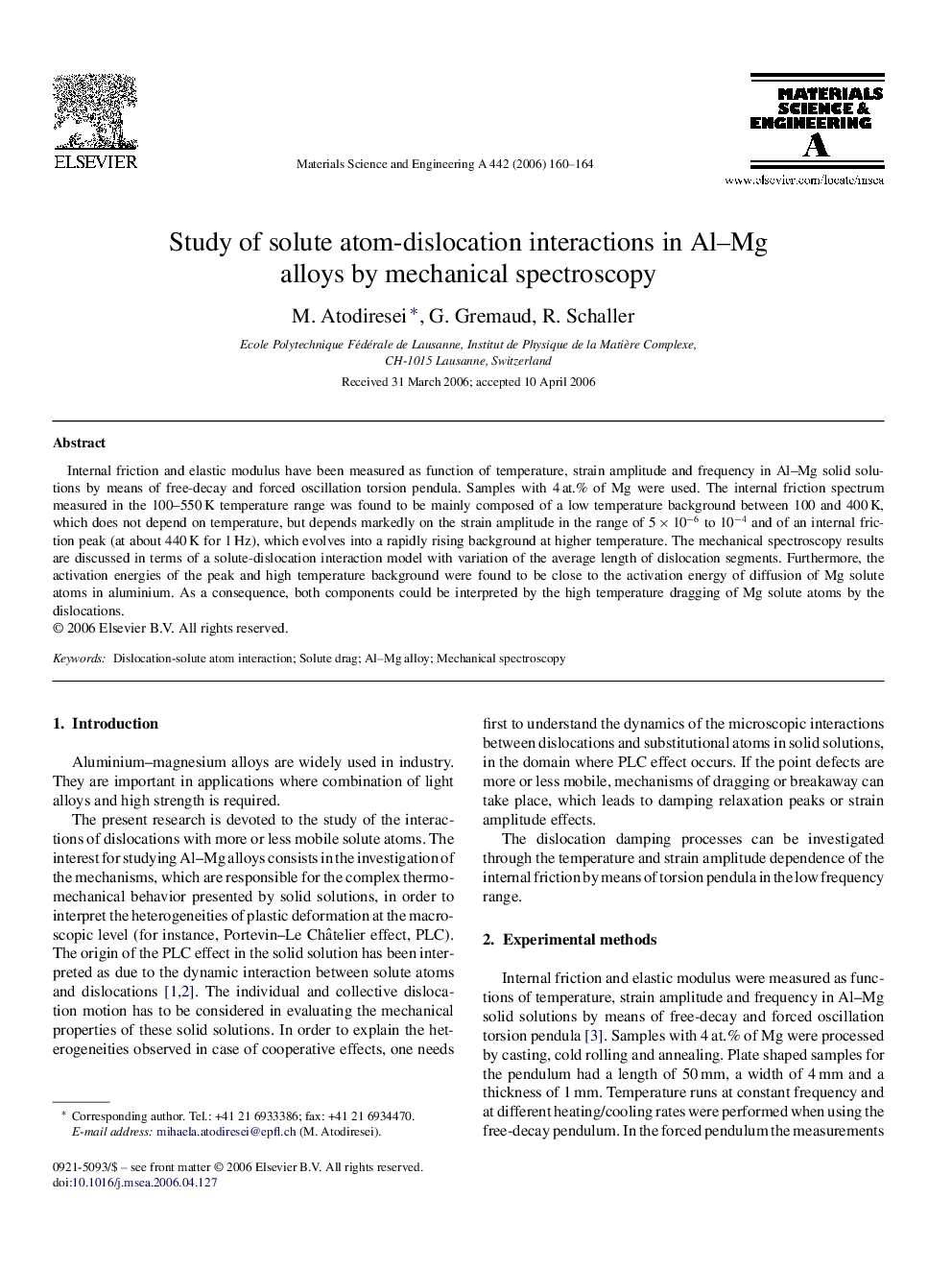| Article ID | Journal | Published Year | Pages | File Type |
|---|---|---|---|---|
| 1584633 | Materials Science and Engineering: A | 2006 | 5 Pages |
Abstract
Internal friction and elastic modulus have been measured as function of temperature, strain amplitude and frequency in Al-Mg solid solutions by means of free-decay and forced oscillation torsion pendula. Samples with 4Â at.% of Mg were used. The internal friction spectrum measured in the 100-550Â K temperature range was found to be mainly composed of a low temperature background between 100 and 400Â K, which does not depend on temperature, but depends markedly on the strain amplitude in the range of 5Â ÃÂ 10â6 to 10â4 and of an internal friction peak (at about 440Â K for 1Â Hz), which evolves into a rapidly rising background at higher temperature. The mechanical spectroscopy results are discussed in terms of a solute-dislocation interaction model with variation of the average length of dislocation segments. Furthermore, the activation energies of the peak and high temperature background were found to be close to the activation energy of diffusion of Mg solute atoms in aluminium. As a consequence, both components could be interpreted by the high temperature dragging of Mg solute atoms by the dislocations.
Related Topics
Physical Sciences and Engineering
Materials Science
Materials Science (General)
Authors
M. Atodiresei, G. Gremaud, R. Schaller,
